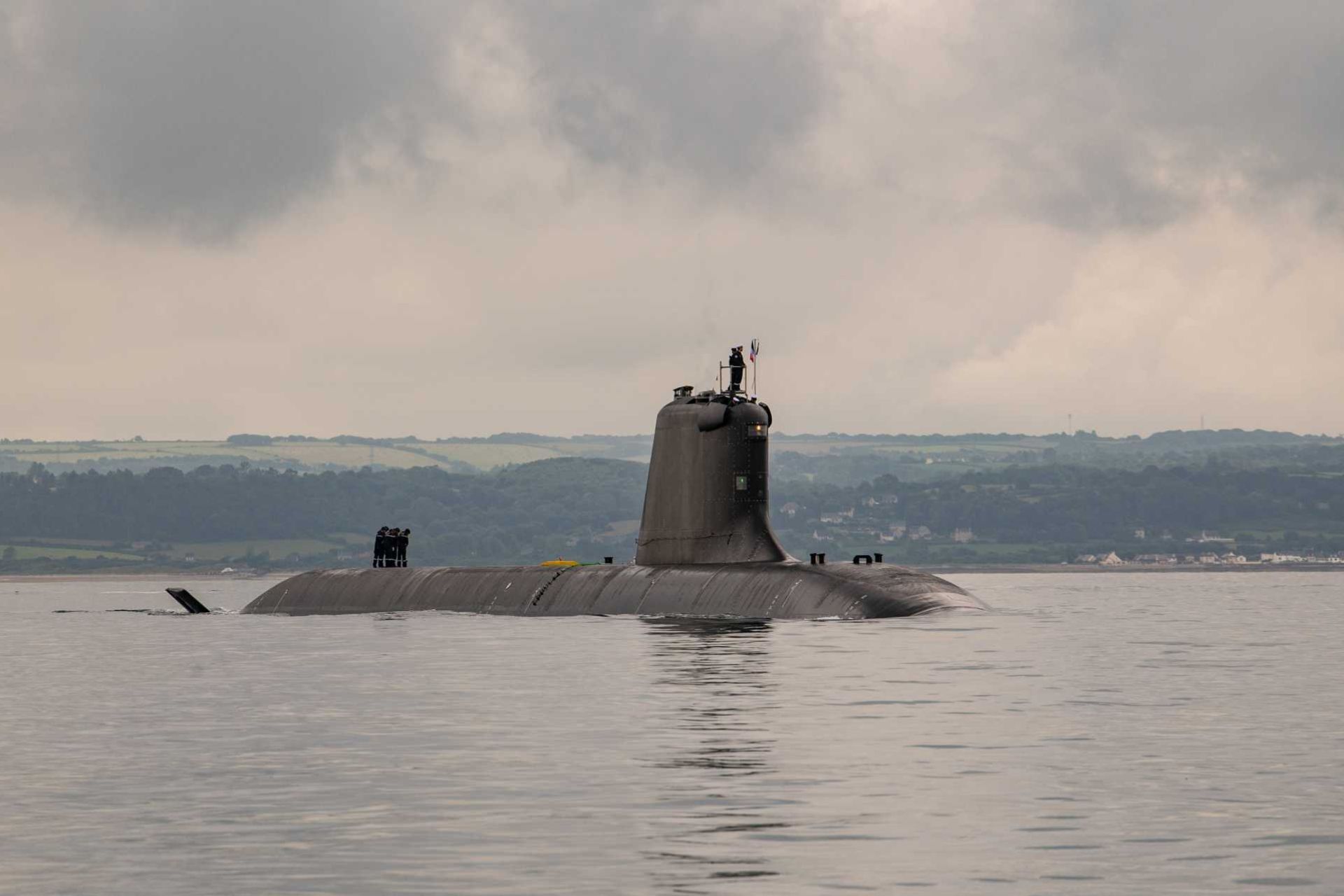Breaking News
Tourville Suffren-class attack submarine enters service enhancing underwater capabilities of French Navy.
According to information published by the French Ministry of Armed Forces on July 4, 2025, the French Navy has officially inducted the Suffren-class or Barracuda-class nuclear-powered attack submarine Tourville into active service. This marks the third unit of the Barracuda-class submarines, also known as the Suffren-class, to enter service. The submarine joins the previously commissioned Suffren and Duguay-Trouin as part of a strategic effort to modernize and expand France’s undersea warfare capabilities through a fleet of six advanced nuclear-powered attack submarines.
Follow Army Recognition on Google News at this link

French Navy's Tourville Suffren-class attack submarine pictured during sea trials before commissioning. (Picture source: French MoD)
The construction of the Suffren-class attack submarine Tourville began on June 28, 2011, with the ceremonial cutting of the first steel sheet at the Naval Group shipyard in Cherbourg. The submarine is named in honor of Vice Admiral and Marshal of France Anne Hilarion de Costentin de Tourville, a key naval figure in the history of the French Navy. The vessel exited the construction hall and was transferred to its launch platform on July 20, 2023. The nuclear reactor reached initial criticality on April 24, 2024, a critical milestone in the submarine's development.
Sea trials commenced on July 12, 2024, and Tourville performed its first dive on July 17. It returned to Cherbourg shortly afterward for technical modifications and final adjustments. The French Navy received the submarine on November 16, 2024, just four months after its first sea trials. This marks a significant improvement in delivery time compared to the Duguay-Trouin, which took one year, and the lead vessel Suffren, which required nearly two years between sea trials and commissioning.
The lead submarine of the class, Suffren, officially entered active service with the French Navy on June 3, 2022. It was the first new-generation nuclear-powered attack submarine delivered under the Barracuda program and marked a significant step in modernizing the French undersea fleet. Its commissioning followed extensive testing and sea trials that began in 2020 and included qualification of its combat and propulsion systems.
The French Navy’s submarine fleet currently includes nine nuclear-powered submarines. These consist of four Le Triomphant-class ballistic missile submarines, which form the backbone of France’s nuclear deterrent, and five nuclear-powered attack submarines. Among the SSNs, three are Barracuda-class submarines including Suffren, Duguay-Trouin, and Tourville. Two older Rubis class submarines, Améthyste and Perle, remain in service but are scheduled for decommissioning. The fourth Barracuda-class submarine, De Grasse, is undergoing sea trials and is expected to be commissioned in the near future.
The Barracuda class introduces significant advancements over the aging Rubis class. A K15 pressurized water reactor powers each submarine and features a pump-jet propulsion system that improves stealth and reduces acoustic signatures. The submarines can remain submerged for up to 70 days and are equipped with four 533 mm torpedo tubes. Their armament includes F21 heavyweight torpedoes, Exocet SM39 anti-ship missiles, and MdCN land-attack cruise missiles capable of striking targets over 1,000 kilometers away. Additionally, they can support special operations forces with dry deck shelters allowing deployment of combat swimmers and unmanned underwater vehicles.
The Barracuda program was formally launched on December 22, 2006, when Naval Group and TechnicAtome were awarded the contract to construct six submarines. With a total estimated cost of € 9.1 billion, the program represents a cornerstone of France’s long-term naval strategy.
A strong submarine force is critical for the French Navy’s global posture. Submarines provide unmatched capabilities in intelligence gathering, surveillance, sea denial, and strategic deterrence. For a country with overseas territories and wide maritime interests, nuclear-powered submarines are essential tools for defending national sovereignty, maintaining freedom of navigation, and projecting power where needed. The commissioning of the Suffren-class attack submarine Tourville strengthens France’s deterrence capabilities. It enhances its capacity to operate in contested maritime domains under the highest levels of security and discretion.


























